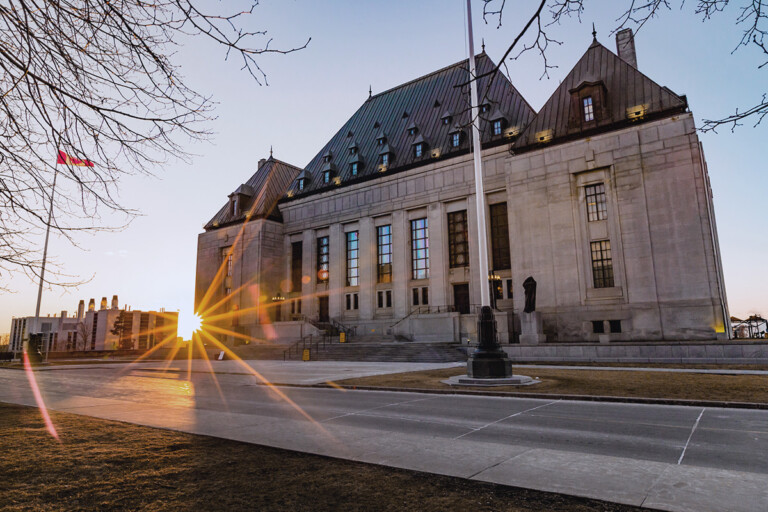
The Canadian Intellectual Property Office has published a new practice notice limiting an applicant’s ability to obtain extensions of time to respond to an Examiner’s Report. Issued January 17, 2020, the change has immediate effect.
Though practice notices do not have the force of law, they provide guidance on practice in the Canadian Intellectual Property Office (“CIPO”), and its interpretation of Canada’s Trademarks Act (the “Act”) and its Trademarks Regulations. Given this, practice notices can have a significant impact on day-to-day aspects of Canadian trademark prosecution.
To set the context for the new notice: under the prior regime, CIPO granted applicants one six-month extension of time to respond to an Examiner’s Report as of right. Coupled with the initial six-month deadline for response to the Report, this effectively provided a 12-month Examiner’s Report response window—with further extensions available in ‘exceptional circumstances’.
The new practice notice, titled “Extensions of time in Examination and to respond to a section 44.1 notice” (the “Practice Notice”), treats all extensions as ‘exceptional’; ‘free’, as of right extensions are no longer available to respond to new Examiner Reports. Instead, applicants must establish ‘exceptional circumstances’ to justify any extension of time beyond the initial six-month response period.
The new Practice Notice sets out seven examples of ‘exceptional circumstances’ which may justify an extension, as listed below; these are largely holdovers from the prior regime. An applicant may request multiple extensions based on one of these seven circumstances, and extensions are typically granted if the applicant can establish the circumstances exist or persist (as the case may be), making further time for response necessary.
- Recent change in the trademark agent of record.
- Circumstances beyond the control of the person concerned (illness, accident, death, bankruptcy, unforeseen circumstance, etc.).
- A request is pending to record or register the transfer of an application or registered trademark that would overcome a confusion objection.
- A cited co-pending trademark is the subject of a pending opposition proceeding.
- A cited registered trademark is the subject of a pending non-use expungement (section 45) proceeding.
- The applicant is in the process of actively negotiating consent from the holder of a cited section 9 mark (a “prohibited mark” or “official mark”).
- The applicant has filed a request to divide, in respect of Canada, the international registration on which the original Protocol application is based.
In fact, the new Practice Notice slightly broadens the circumstances concerning both oppositions and non-use expungement. The old notice contemplated an extension only where those proceedings were “initiated by the applicant”—which, at least in non-use expungement proceedings, is rarely the case in Canada. The new Practice Notice eliminates that requirement, making the extension generally available if a cited mark is the subject of an opposition or non-use expungement, regardless by whom it was commenced.
The new Practice Notice also adds two sets of ‘exceptional circumstances’ that may justify an extension—but these come with a catch: an applicant can only request one six-month extension based on each of these circumstances, per prosecution, i.e. once during the life of a given application. These are:
- The applicant requires more time to consider and prepare a response to a refusal on substantive grounds, namely that the trademark is not registrable, is confusingly similar to a prior third-party mark, or lacks inherent distinctiveness (paragraphs 37(1)(b), (c), or (d) of the Act).
- The applicant is compiling evidence of acquired distinctiveness based on use of the trademark in Canada, to show that the trademark was distinctive as at the filing date of the application, as under subsection 32(1) of the Act.
Considering the nine circumstances on the whole, the effect of the new Practice Notice is that for Examiner Reports containing only formality-related objections (for example, goods and services description issues, translation requirements, or Nice classification requests), extensions of time are generally not available. Only in the event of a change in the trademark agent of record, a request to divide, or circumstances otherwise beyond the control of the person concerned, might an extension be granted.
That said, for Examiner’s Reports containing both formality and substantive objections, if an applicant obtains an extension on exceptional circumstances, that extension will extend to the more minor, formality-focused issues as well.
As noted above, the new Practice Notice has immediate effect—which raises questions about its impact on pending applications. For an Examiner’s Report issued on or after January 17, 2020, all aspects of these new rules apply. For an Examiner’s Report issued prior to January 17, the rules limiting the availability of extensions do not apply, and an initial extension as of right, as provided under the old regime, is available. The new rules broadening extension availability relating to opposition and non-use cancellations apply in all instances.
In light of these changes, clients and foreign counsel should avoid delays in instructing Canadian counsel—particularly where it concerns more straightforward Examiner’s Reports, where extensions of time will be less readily available than in the past.
In other words, don’t delay; instruct today!




